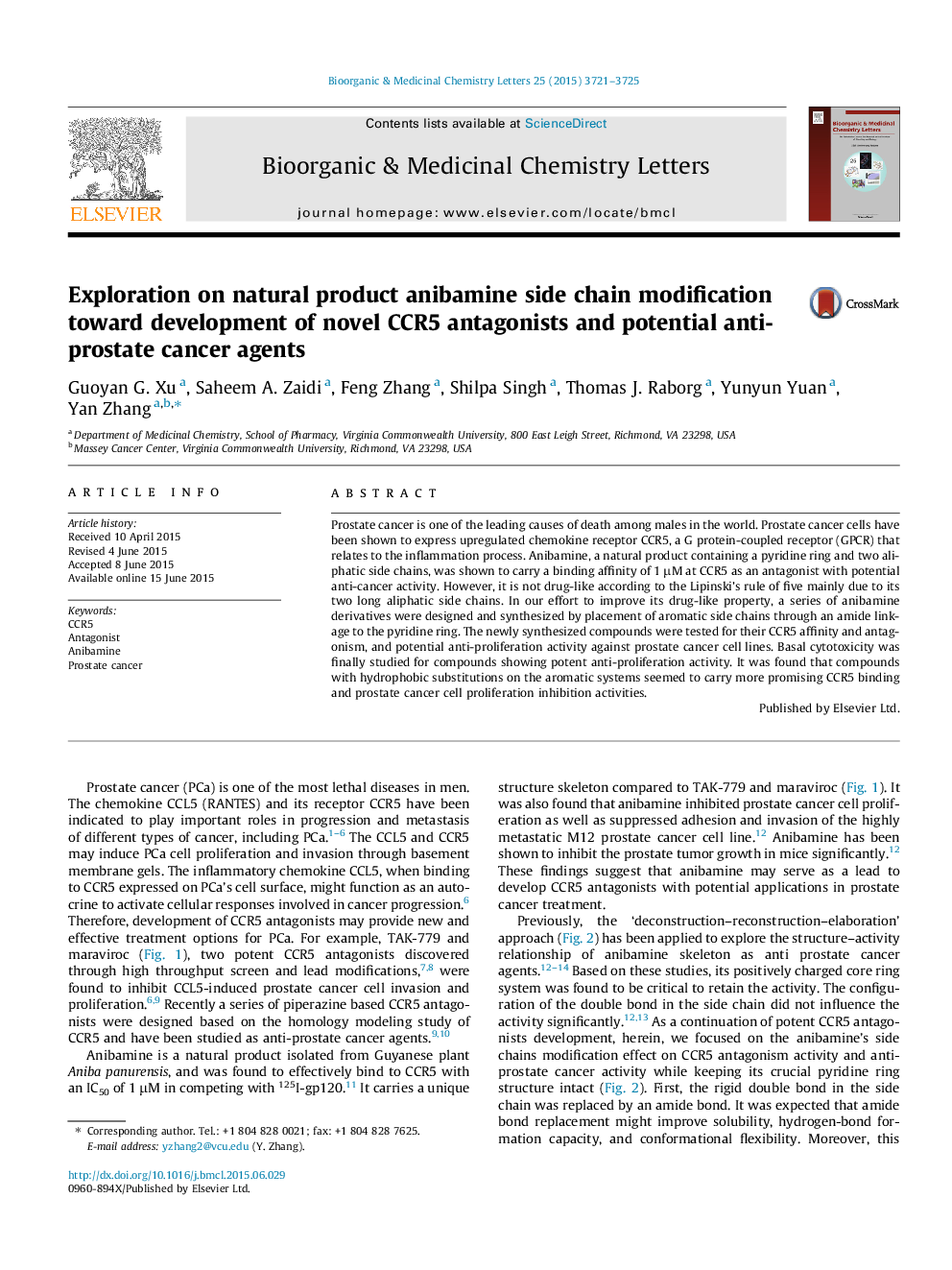| Article ID | Journal | Published Year | Pages | File Type |
|---|---|---|---|---|
| 1370566 | Bioorganic & Medicinal Chemistry Letters | 2015 | 5 Pages |
Prostate cancer is one of the leading causes of death among males in the world. Prostate cancer cells have been shown to express upregulated chemokine receptor CCR5, a G protein-coupled receptor (GPCR) that relates to the inflammation process. Anibamine, a natural product containing a pyridine ring and two aliphatic side chains, was shown to carry a binding affinity of 1 μM at CCR5 as an antagonist with potential anti-cancer activity. However, it is not drug-like according to the Lipinski’s rule of five mainly due to its two long aliphatic side chains. In our effort to improve its drug-like property, a series of anibamine derivatives were designed and synthesized by placement of aromatic side chains through an amide linkage to the pyridine ring. The newly synthesized compounds were tested for their CCR5 affinity and antagonism, and potential anti-proliferation activity against prostate cancer cell lines. Basal cytotoxicity was finally studied for compounds showing potent anti-proliferation activity. It was found that compounds with hydrophobic substitutions on the aromatic systems seemed to carry more promising CCR5 binding and prostate cancer cell proliferation inhibition activities.
Graphical abstractFigure optionsDownload full-size imageDownload as PowerPoint slide
